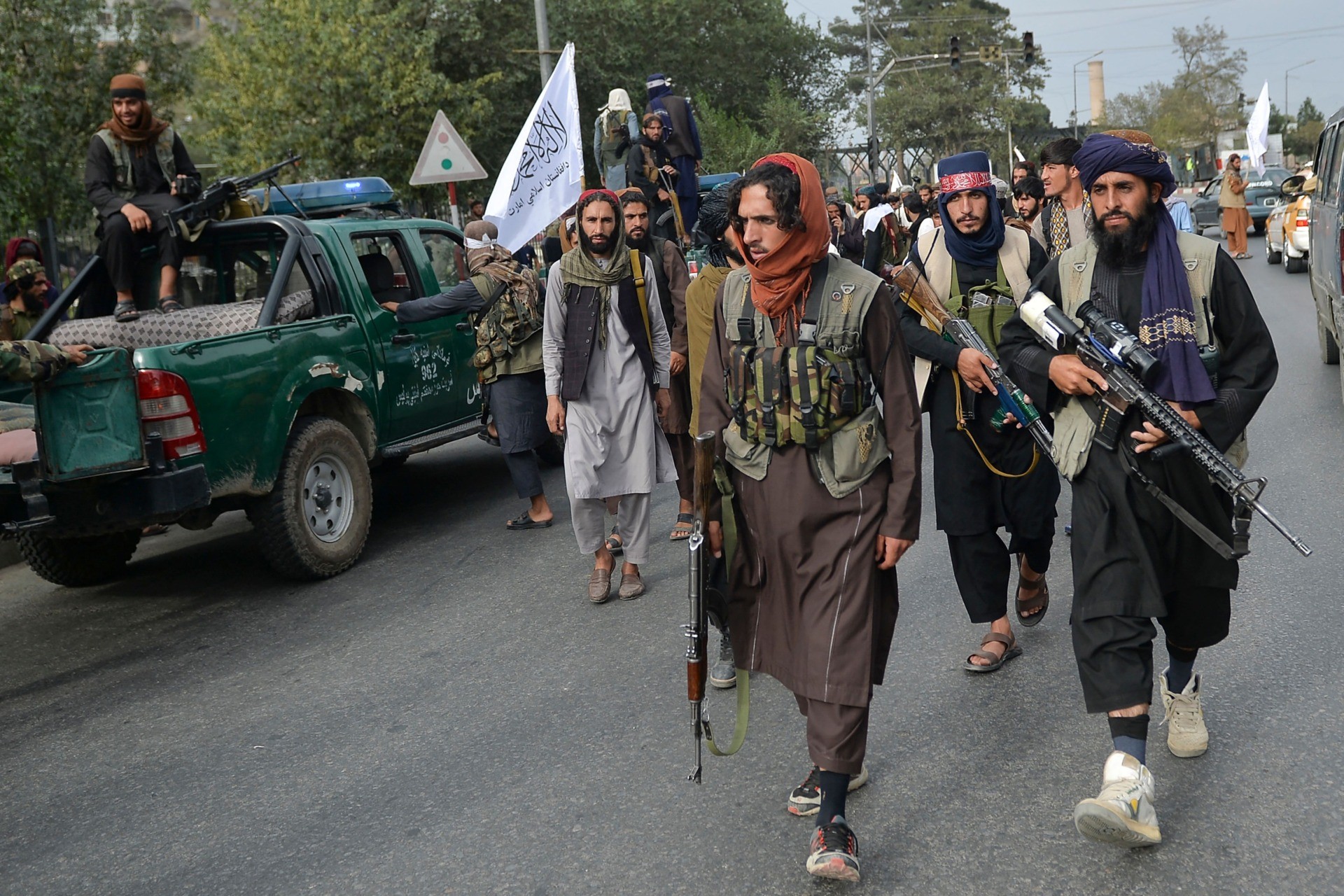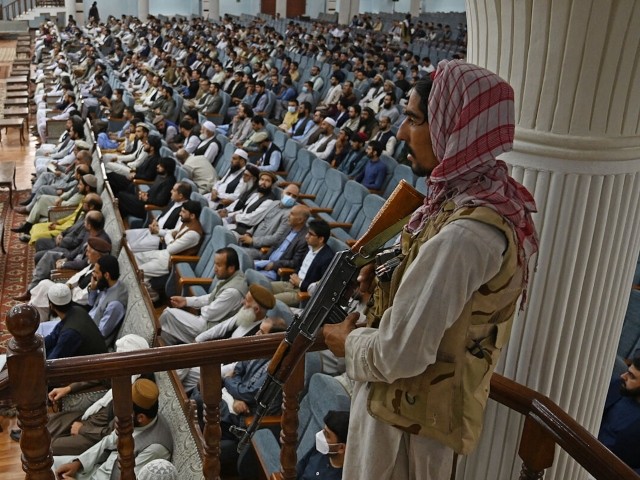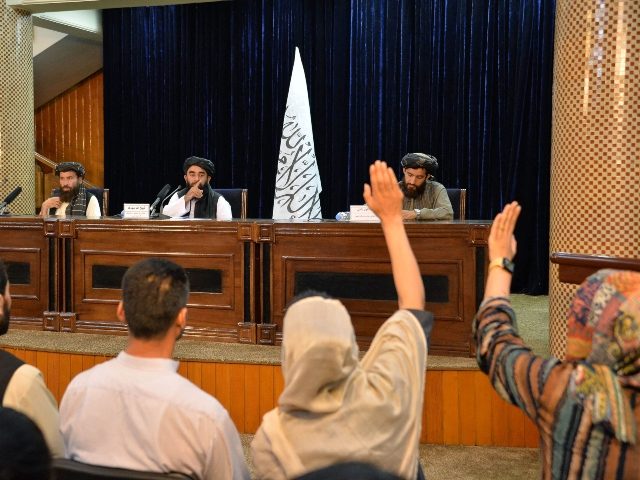The Afghan news network Pajhwok reported on Thursday that Afghanistan has lost 27 media outlets – including both television and print/online media – since the Taliban took over the country on August 15.
The publications and broadcasters identified may be among hundreds of journalistic organizations in the country that will not survive the terrorist group’s installation as the de facto government of Afghanistan. Reporters Without Borders, an international advocacy network for free journalism, found evidence that over 100 media outlets in the country stopped operating indefinitely in the first two days of the Taliban regime.
During the Taliban’s first tenure running the country between 1996 and 2001, the jihadist organization implemented an extremist interpretation of sharia, the Islamic law, that prevented women from showing any part of their bodies – including their eyes – in public, banned girls from school, and punished any deviation from Quranic beliefs with extreme violence and death. Its tyrannical rule resulted in a near-complete limitation of freedom of expression and freedom of the press outside of jihadist propaganda.
This time, Taliban terrorists through official spokesmen have insisted that the new sharia regime will allow the media to operate, but only so long as they respect “Islamic values.”
“Pajhwok Afghan News has interviewed media officials in Kandahar, Balkh, Paktika and Farah provinces who have spoken out against the closure of some audio, video and print media,” the news agency reported on Thursday. “They cited insecurity, fear of the Islamic Emirate of Afghanistan and financial problems as the reason for the media shutdown.”

Taliban fighters gather along a street during a rally in Kabul on August 31, 2021 as they celebrate after the US pulled all its troops out of the country to end a brutal 20-year war — one that started and ended with the hardline Islamist in power. (Photo by Hoshang Hashimi / AFP) (Photo by HOSHANG HASHIMI/AFP via Getty Images)
Specific financial problems prominently included a sudden inability to secure advertising, as many Afghan companies found themselves abruptly unable to do any business. Without advertising, the outlets could not pay employees to come to work. Other networks said they could no longer function because looters vandalized their headquarters, leaving them with no equipment to function.
Among the 27 media organizations shut down, Pajhwok reported, were nine television stations, including every station in Kandahar, the second-largest city in the country. Eleven radio stations also shut down, according to the outlet. Several others simply stopped broadcasting indefinitely due to “lack of a clear policy for the media,” indicating a fear of upsetting the Taliban and inciting terrorists to attack them.
Zabihullah Mujahid, a senior Taliban spokesman, attempted to lay out a regulatory policy for media operating in the country during his first press conference following the collapse of the Afghan government last month. He did not specify if the Taliban would allow women to participate in media and gave only vague guidance as to what Taliban jihadists would deem acceptable broadcasts.
“Islamic values should be taken into account when it comes to the activities of the media, when it comes to developing your programs,” Mujahid told reporters. “Therefore, the media should be impartial. Impartiality of the media is very important. They can critique our work, so that we can improve.”
He added that media outlets should “not work against this national values, against national unity.”
Shortly after these remarks, the Taliban began banning the broadcast not just of women’s images, but of voices of women and girls on television and radio. Taliban jihadists also urged Afghans not to play music, claiming that all music violates sharia, but stated they hoped not to have to implement a formal decree against music.

TOPSHOT – A Taliban fighter stands guard as Talibans acting Higher Education Minister Abdul Baqi Haqqani (not pictured) addresses a gathering during a consultative meeting on Taliban’s general higher education policies at the Loya Jirga Hall in Kabul on August 29, 2021. – Afghan women will be allowed to study at university but there would be a ban on mixed classes under their rule, Haqqani said. (Photo by Aamir QURESHI / AFP) (Photo by AAMIR QURESHI/AFP via Getty Images)
Journalists began reporting widespread violence against themselves almost immediately after the Taliban took over the country. German news network Deutsche Welle confirmed the killing of a family member of one of its reporters during what appeared to be a raid seeking to find that reporter (the reporter had since left to Germany). Deutsche Welle accused the Taliban of conducting organized attacks on known journalists in an attempt to silence sources of information it did not control.
Shabnam Khan Dawran, an anchor for Radio Television Afghanistan (RTA), accused Taliban jihadists of preventing her from entering her offices and doing her job.
“I wanted to return to work, but unfortunately they did not allow me to work. They told me that the regime has changed and you cannot work,” Dawran told the national news outlet Tolo News. Dawran also revealed that Taliban jihadists were trapping all women inside their homes before Mujahid confirmed that report, claiming it was necessary for women’s safety.
Taliban spokesmen announced the creation of a “committee” to investigate its own crimes against journalists last week. The committee has yet to take any action on any denunciation of radical Islamic violence against journalists.
The media assault has disproportionately hurt women journalists in the country, Reporters Without Borders revealed in an investigation on Wednesday.
“Of the 510 women who used to work for eight of the biggest media outlets and press groups [in Kabul], only 76 (including 39 journalists) are still currently working. In other words, women journalists are in the process of disappearing from the capital,” the report read in part. It revealed that the organization could verify that only fewer than 100 women journalists were currently working in the country out of the 700 known to have been active in Kabul alone. Media executives and journalists who have attempted to help return women to these jobs reportedly faced extreme violence, particularly gang beatings, at the hands of Taliban thugs.

COMMENTS
Please let us know if you're having issues with commenting.